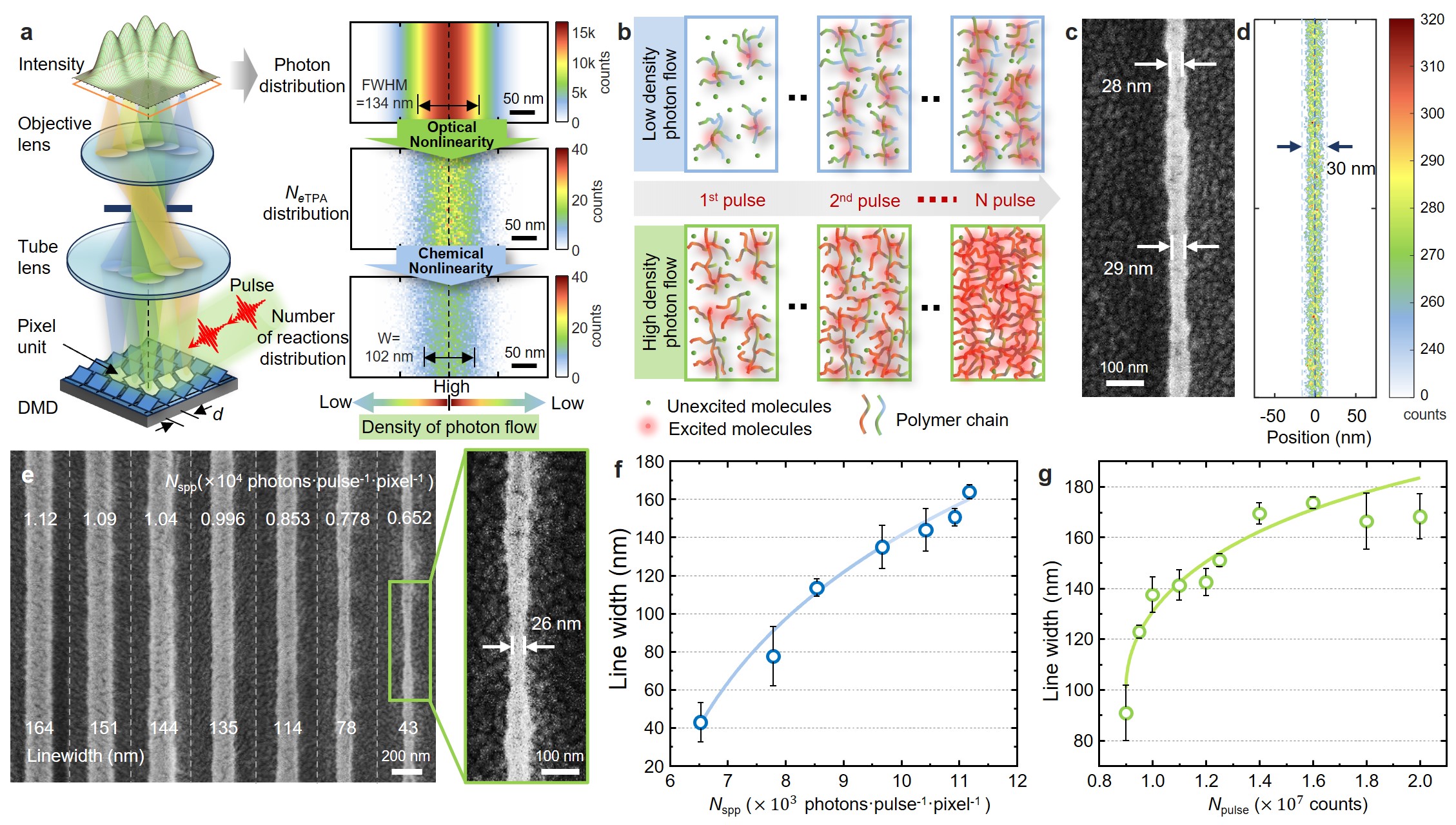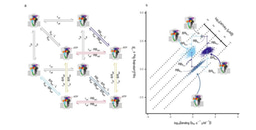Pushing the Limits: Igniting a Spark with Few Photons in Optical Nanoprinting

In our latest paper, “Two-photon absorption under few-photon irradiation for optical nanoprinting”, we proposed a novel approach based on few-photon irradiation to achieve two-photon absorption (fpTPA). For the first time, this enables the simultaneous realization of both high resolution and high efficiency in optical nanoprinting. The work was recently published in Nature Communications, but the story behind it is far more winding and exciting than the final results suggest.
The Beginning: A "Mission Impossible"?
For a long time, the field of nanoprinting faced a seemingly unsolvable dilemma:
High resolution requires low light intensity, but low intensity dramatically reduces the efficiency of two-photon absorption, making the printing process frustratingly slow. Conversely, enhancing efficiency typically meant sacrificing resolution. It was widely accepted as a "physical limit" — an inherent trade-off.
But we were not ready to accept that.
During a group meeting, Professor Xuan-Ming Duan ( the team leader) asked a doctoral student (Dr. Zi-Xin Liang, first author of the paper) a seemingly ignorant question:
"What if we could control exactly how many photons reach the sample — could a miracle happen?"
This simple question sparked our determination to challenge the status quo.
.png)
Figure 1 Conceptual rendering based on few-photon irradiation two-photon absorption (fpTPA).
The Process: Exploring the "Few-Photon World"
Our idea was to exploit the precise controllability of femtosecond laser pulses to enable efficient two-photon absorption under ultra-low photon flux. However, this required a fundamental rethinking of the two-photon absorption process — moving beyond classical high-intensity statistics to a microscopic, time-dependent quantum interaction.
The initial modeling work was extremely challenging.
Simulations failed repeatedly, parameters had to be adjusted countless times, and at one point, we began to wonder: "Is this even physically feasible?" But we kept reminding ourselves: new paths cannot be found by walking the old ones.
After nearly a year of theoretical derivations and numerical verifications, we finally built a spatiotemporal probability model of two-photon absorption under few-photon conditions. This model theoretically demonstrated that efficient excitation is possible even at ultra-low photon densities.
The Breakthrough: A Long March from Theory to Experiment
After completing the theoretical framework, another major hurdle loomed: experimental validation.
Initially, sample preparation was unstable, and laser energy control proved much harder than expected.
I vividly remember one occasion when we (Me and Dr. Liang) worked non-stop in the lab for 48 hours straight, trying to verify a printing feature width about 50 nm. At 4 a.m., when we finally saw a clear 26 nm linewidth on the scanning electron microscope, all the exhaustion melted away into excitement.
Later, we integrated this few-photon irradiation technique into a digital optical projection nanolithography (TPDOPL) system, significantly boosting throughput. We also successfully fabricated dense periodic structures with a pitch of just 210 nm — far beyond what conventional optical exposure methods could achieve.

Figure 2 Schematic diagram of two-photon digital optical projection printing system and simulation and experimental processing results.
Reflection and Outlook: Many "Limits" Are Yet to Be Broken
Looking back, this work has taught us a profound lesson:
True limits are often drawn not by physical laws, but by the inertia of our thinking.
Moving forward, we aim to extend the few-photon irradiation two-photon absorption technique into areas such as super-resolution imaging, three-dimensional nanofabrication, and even biotissue engineering.
We are also exploring integrating this method with quantum light sources to develop ultra-low energy, ultra-sensitive micro- and nanoscale manufacturing and sensing technologies.
Every few photons might ignite a new technological revolution.
And this is just the beginning.
Paper Information:
Zi-Xin Liang, Yuan-Yuan Zhao, Jing-Tao Chen, Xian-Zi Dong, Feng Jin, Mei-Ling Zheng, Xuan-Ming Duan.
Two-photon absorption under few-photon irradiation for optical nanoprinting.
Nature Communications, 16, 2086 (2025).
DOI: 10.1038/s41467-025-57390-9
Follow the Topic
-
Nature Communications

An open access, multidisciplinary journal dedicated to publishing high-quality research in all areas of the biological, health, physical, chemical and Earth sciences.
Your space to connect: The Polarised light Hub
A new Communities’ space to connect, collaborate, and explore research on Light-Matter Interaction, Optics and Photonics, Quantum Imaging and Sensing, Microscopy, and Spectroscopy!
Continue reading announcementRelated Collections
With Collections, you can get published faster and increase your visibility.
Women's Health
Publishing Model: Hybrid
Deadline: Ongoing
Advances in neurodegenerative diseases
Publishing Model: Hybrid
Deadline: Dec 24, 2025




Please sign in or register for FREE
If you are a registered user on Research Communities by Springer Nature, please sign in
-
-
-
2. Energy Control and System Stability IssuesIs the fpTPA mechanism universally applicable across different types of photoresist materials?
How do variations in molecular energy levels among materials affect the efficiency of fpTPA?
What level of material and process control is required for practical deployment?
-
-
3. Gap Between Theoretical and Practical Resolution LimitsUnder few-photon conditions, how can stable photon flux be maintained during large-area fabrication?
Does energy fluctuation in femtosecond laser systems significantly impact the consistency and reliability of the fpTPA process?
-
-
4. Trade-off Between Throughput and Structural ComplexityAlthough 26-nanometer feature sizes were achieved, is it theoretically possible to push the resolution down to 10 nm or even lower?
As feature sizes approach the molecular scale, will the current fpTPA models and mechanisms still hold, or will new physical phenomena emerge?
-
-
5. System Integration and Process ScalabilityWhile throughput has been enhanced by five orders of magnitude, could the fabrication of highly complex 3D micro/nano structures still be time-consuming?
Does the in-situ double mask exposure (iDME) strategy introduce added complexity in pattern design and process control?
-
-
6. Challenges and Extensions to Traditional Two-Photon Absorption TheoryAlthough fpTPA is compatible with existing digital optical projection setups, would industrial-scale applications require specialized hardware upgrades?
Could the current DMD-based projection approach be extended to multi-source or multi-field collaborative printing systems?
Does the fpTPA mechanism necessitate a revision of conventional two-photon absorption theoretical frameworks?
Do the quantum effects observed under ultra-low photon flux indicate a need for new models in nonlinear optics?